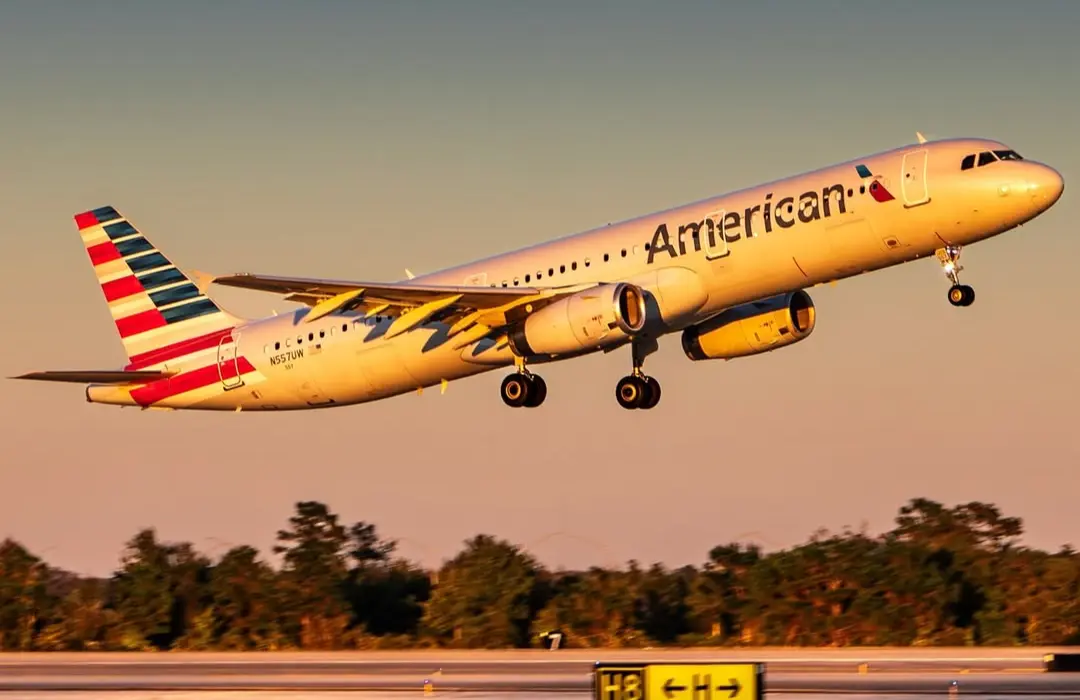Why did TSA shoe removal policy start? History explored as authorities end rule after 20 years
-
 American Airlines plane taking off (Image via Instagram/@americanair)
American Airlines plane taking off (Image via Instagram/@americanair)From a practical standpoint, millions of travelers passing through United States airports have taken off their shoes at security checkpoints in the nearly two decades since the rule went into effect. But now, that policy is said to be removed.
Airline passengers across the country can keep their shoes on as they pass through security checkpoints, as the Transportation Security Administration (TSA) rolls out new screening capabilities.
The shoe-removal requirement was first mandated in 2006, after a well-known attempt to blow up a plane with a bomb hidden in a shoe. On December 22, 2001, a British man named Richard Reid tried to bring explosives aboard an American Airlines flight from Paris to Miami hidden in his shoes.
23 years ago, Richard Reid, AKA the “shoe bomber,” boarded American Airlines Flight 63 with homemade explosives in his shoes. Discover how the crew and passengers thwarted his plot and the crucial role the #FBI played in bringing him to justice: https://t.co/a8OL3cNSu4 pic.twitter.com/K1LpiQSsqm
— FBI Baltimore (@FBIBaltimore) December 22, 2024
According to CBS News, Reid tried to detonate his makeshift bombs through a fuse while in flight, but other passengers and crew members restrained him in time. The FBI later reported that there was about 10 ounces of explosive material in Reid’s shoes, sufficient to cause the airplane to fall out of the sky.
In the aftermath of that plot, the TSA increased screenings to prevent such attacks from occurring in the US. Therefore, America had to do away with shoes at security checkpoints.
This temporary measure was followed due to some intelligence reports warning of an ongoing threat. The shoes-off policy became the norm in August 2006.
A look into the recent change in the TSA shoe removal policy
Only passengers who are registered with TSA PreCheck, a paid service that offers expedited screening, were previously exempted from the need to remove their shoes. That was a selling point of PreCheck, which the TSA even advertised as a benefit in commercials, telling people they could keep their shoes on.
But technological improvements in screening and a fresh look at security protocols have led the agency to re-evaluate the policy. The rule will be rescinded immediately, Kristi Noem, the Homeland Security secretary, said on July 8, 2025.
She said a thorough examination determined that other forms of screening provide necessary protection without forcing fliers to remove their shoes.
"With this no-shoes policy, we anticipate that Americans and travelers and those coming into our country will be very excited they will no longer have to remove their shoes." Kristi Noem said.
🚨 BREAKING: AFTER 20 YEARS, TSA QUIETLY ENDS SHOE REMOVAL RULE: EFFECTIVE IMMEDIATELY
For two decades, they made you walk barefoot in filthy airports like your sneakers were a threat to national security.
Now?
It’s gone.
No PreCheck. No REAL ID.
Everyone keeps their shoes… pic.twitter.com/iy7QvSfj1x
— HustleBitch (@HustleBitch_) July 7, 2025
Although most passengers will now be able to keep their shoes on, travelers who are selected for additional screening may still be asked to remove their shoes. There have been reports of shorter lines and smoother operations as the change has already been implemented at several major airports, including Baltimore/Washington International and Philadelphia International Airport.
Industry leaders welcomed the decision. The move was praised by Airlines for America CEO Nicholas Calio as “a commonsense approach” that prioritizes security while managing passenger flow.
"One of the biggest changes to TSA screening in over a decade... It marks a huge shift in what the average traveler is used to going through TSA." Former TSA agent Caleb Harmon-Marshall said.
While the expiration of the rule may diminish one of PreCheck’s prime perks, officials said the program would still have advantages, especially not having to remove belts, liquids, and electronics when screened.
TOPICS: Human Interest, Caleb Harmon-Marshall, Kristi Noem, Nicholas Calio, Richard Reid, shoe removal policy, TSA, TSA shoe removal, United States airports